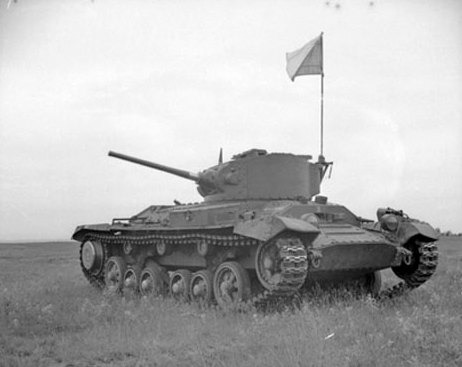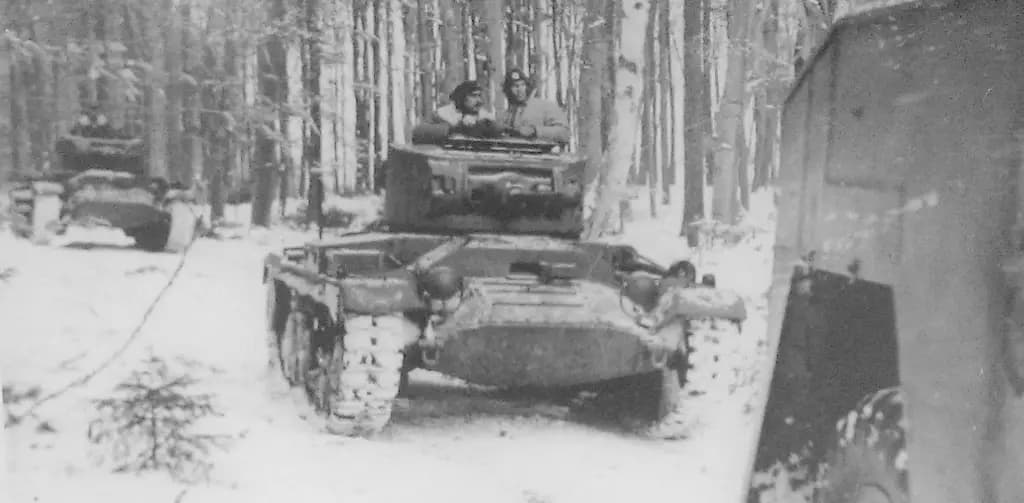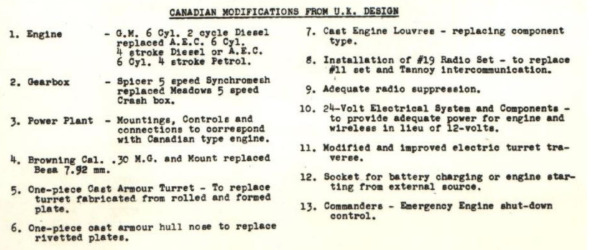- Yes
- No
Hello, I’d like to suggest the Canadian-built Valentine tanks used by Canada. Out of all the models built by Canada, as far as I can find, this is the only one they could get. Plus, my interest in them peaked when I learnt that the Canadian Pacific Railway had their hand in it.

History:
Despite the fact that in 1939, the British heavy industry was completely engaged with tank production, there were concerns it wasn’t enough. So, they began looking outside the UK to increase production, this would led them to pick the Angus Workshops of the Canadian Pacific Railway. Due to the fact that they were already building locomotives and rolling stock, it was figured they would be able to convert to tank production with relative ease. The tank selected for this purpose would end up being the Valentine, although this wouldn’t be without concerns, namely about the potential for upgrades and modifications. The British would originally order 25 tanks just to establish a production line, this would be increased to 100 by September of 1939. Canada would be allowed to produce a number for its own army after the British order was completed.
The pre-production of the Valentines would start basically immediately after the order was placed. However, due to problems with the drawings, like parts being missing and poor quality, they weren’t able to be used. Mixed with the fact that setting up the tooling and securing supply for the components was taking longer than originally expected, production had not started by 1940. These issues would lead to concerns that had the British cancel the order in April of 1940. This cancellation would not stay for long, as in May of 1940, the invasion of France would occur, which would lead the British to make a new request concerning Canada’s ability to build tanks. The outcome of this would lead to a new order of 300 Valentines, with the number increasing a number of times until it hit a total of 1390 tanks made of the Mk IV, VII, and VIIa variants. Canada had hopes of adding a follow-up order onto the existing British order, but this wouldn’t work out, as the British insisted that all tanks be supplied to them as a priority. However, Canada would manage to get a deal to have 30 tanks to use for training and evaluation.
The Valentine tanks Canada had gotten would be supplied under contract CDLV 67. They would all end up being of the Mk. IV varint, whose delivery would start in June of 1941 to Camp Borden, this would get indeed September of the same year. Most of these would be delivered without guns and vision blocks due to a shortage of armaments and optics. They would be installed later when the supplies had been received. Sixteen of the Valentines would be assigned to the Canadian Armoued Corps School at Camp Borden, with the rest either held in stores or given to other units. At Borden, durability and capability trials would take place this would occur in the summer of 1942, with hill-cimbing and suspension being big things. AEDB would hold the cold weather trials in Kampuskaing, Ontario, and Shilo, Manitoba. Due to their use as training vehicles, the Canadian Valitnes rarely any more markings the the D.N.D. registration numbers. Due to their small number and limited use in Canadian service, they wouldn’t receive many modifications, and at most, they would carry spare road wheels due to issues of the rubber tires un-bonding with the metal wheels. By the end of the war, most of the Valentines in Canada would be disposed of, with only one example living, and they ended up on display at Camp Borden.
Specs:
Vehicle Type: Infantry Tank
Origin: Canada/Canadian Railway Company
Numbers Produced: 1,420
Crew: 3 (Commander/Gunner, Loader & Driver)
Main Armament: 1 x OQF 2 pdr L/50 Mk. IX Gun
Elevation: -5° to +20°
Turret Traverse: 360° (Powered)
Gun Sight: No.30 Mk. IIS
Secondary Armament: 1 x .30 Cal M1919A4 Machine Gun (Coaxial).
Smoke Discharger: 2 x 2in Smoke Mortars
Ammunition Carried: 60 x 40mm & 3.150 x .30 Cal + 600 x .303 & 18 x Smoke Rounds
Height: 2.27m
Width: 2.63m
Length: 5.41m
Combat Weight: 17.690 kg
Ground Clearance: 0.41m
Fording Depth: 0.91m
Trench Crossing: 2.36m
Obstacle Clearance: 0.91m
Climbing Ability: 32°
Radio: No. 19 Set
Armour:
Hull Front: 60mm.
Hull Sides: 60mm.
Hull Rear: 60mm.
Hull Top: 20mm.
Hull Bottom: 7mm.
Gun Mantle: 65mm.
Turret Front: 65mm.
Turret Sides: 60mm.
Turret Rear: 65mm.
Turret Top: 20mm.
Engine: GMC 6-71S
Transmission: 5 Forward & 1 Reverse (Diesel)
Maximum Road Range: 145 km
Maximum Cross Country Range: 109 km
Maximum Road Speed: 24 kph
Maximum Cross Country Speed: 15 kph









